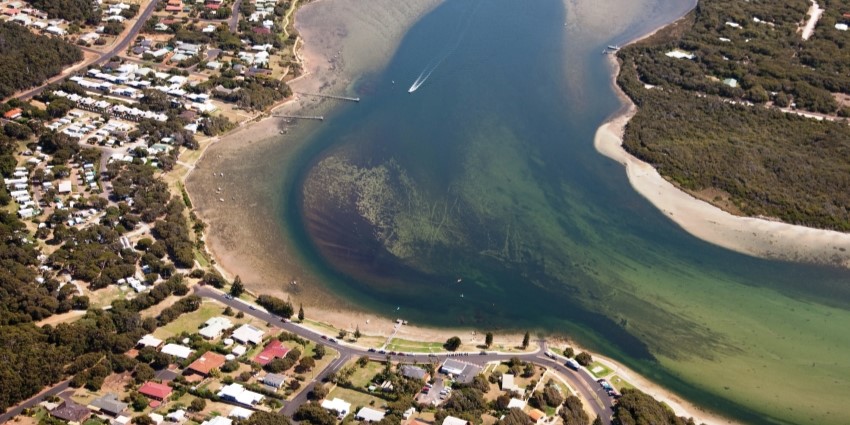Water quality is naturally variable
Water quality in the environment varies naturally between different ecosystems, for example many inland playa lakes (inland lakes that are dry until large rainfall events) and some rivers are naturally saline.
The water quality in an ecosystem also varies over time. This is often due to changes in the quality and quantity of their contributing water sources, which include rainfall, surface flows (rivers, creeks and streams), groundwater and the ocean. For example, many rivers, streams, and wetlands become fresher as a result of seasonal rainfall, but when the stream flows stop, evaporation concentrates salts, nutrients and other contaminants.
The water quality in a system also varies spatially and with depth. This is due to differences in contributing water sources that may be located throughout an ecosystem and the hydrodynamics (movement of water caused by currents, wind and waves) within the ecosystem. For example water quality of estuaries are usually more saline closer to where they meet the ocean because tidal water movement.
Effects of catchment land use and activities
A catchment is the area of land that collects and drains rainwater into a common point, such as a river, lake, estuary or ocean. Land uses and activities in the catchment can have significant effects on water quality by introducing chemicals or by impacting vegetation that filters and processes chemicals before water enters aquatic ecosystems.
Agricultural fertilisers and a range of urban and industrial chemicals can contaminate our wetlands and waterways. At high concentrations these may impact the health of aquatic animals, cause algal blooms and pose a concern to human health. Many of these chemicals can also accumulate in the water and sediments, which presents an increasing risk for areas where sediments accumulate, such as in our coastal estuaries.
Due to agriculture, urban development and extensive historical clearing of native vegetation, salinisation (increased salinity) and eutrophication (excess nutrients) are widespread water quality issues.
Climate change
Climate change is exacerbating the considerable challenges for managing water quality. The drying climate in south-west Western Australia is particularly challenging, with reduced rainfall combined with increased temperatures. There is a higher frequency of extreme weather events, such as intense storms and bushfires, which negatively affect water quality in our waterways. Sea level rise is also a significant concern for our estuaries and other coastal ecosystems.
For further information on some of the specific threats to quality of inland waters see below:



